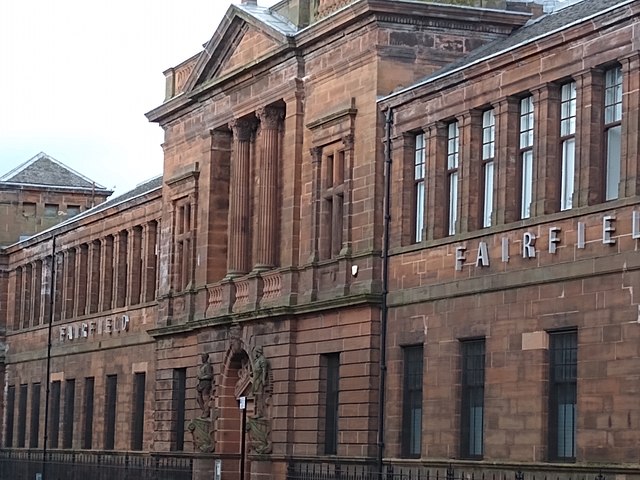RMS Empress of Japan (1929)
RMS Empress of Japan was an ocean liner built in 1929–1930 by Fairfield Shipbuilding & Engineering Company at Govan on the Clyde in Scotland for Canadian Pacific Steamships (CP). This ship was the second of two CP vessels to be named Empress of Japan – regularly traversed the trans-Pacific route between the west coast of Canada and the Far East until 1942.
Empress of Japan
1st class children's playroom of Empress of Japan
Empress of Scotland with her decks filled with fighting men. This in-port photograph allows a close view of the ship's construction when ship still had three funnels, circa 1940s.
Hanseatic landing the port of Cuxhaven at Steubenhoeft in summer 1961
Fairfield Shipbuilding and Engineering Company
The Fairfield Shipbuilding and Engineering Company, Limited, was a Scottish shipbuilding company in the Govan area on the Clyde in Glasgow. Fairfields, as it is often known, was a major warship builder, turning out many vessels for the Royal Navy and other navies through the First World War and the Second World War. It also built many transatlantic liners, including record-breaking ships for the Cunard Line and Canadian Pacific, such as the Blue Riband-winning sisters RMS Campania and RMS Lucania. At the other end of the scale, Fairfields built fast cross-channel mail steamers and ferries for locations around the world. These included ships for the Bosporus crossing in Istanbul and some of the early ships used by Thomas Cook for developing tourism on the River Nile.
The imposing red sandstone offices of the Fairfield Shipbuilding and Engineering Company on Govan Road, which from 2013, has formed the Fairfield Heritage Centre.
The former Fairfield shipyard continues in operation as part of BAE Systems Surface Ships.
HMS Delight, a Daring-class Destroyer launched at Fairfield in 1950, was the Royal Navy's first all-welded warship.







